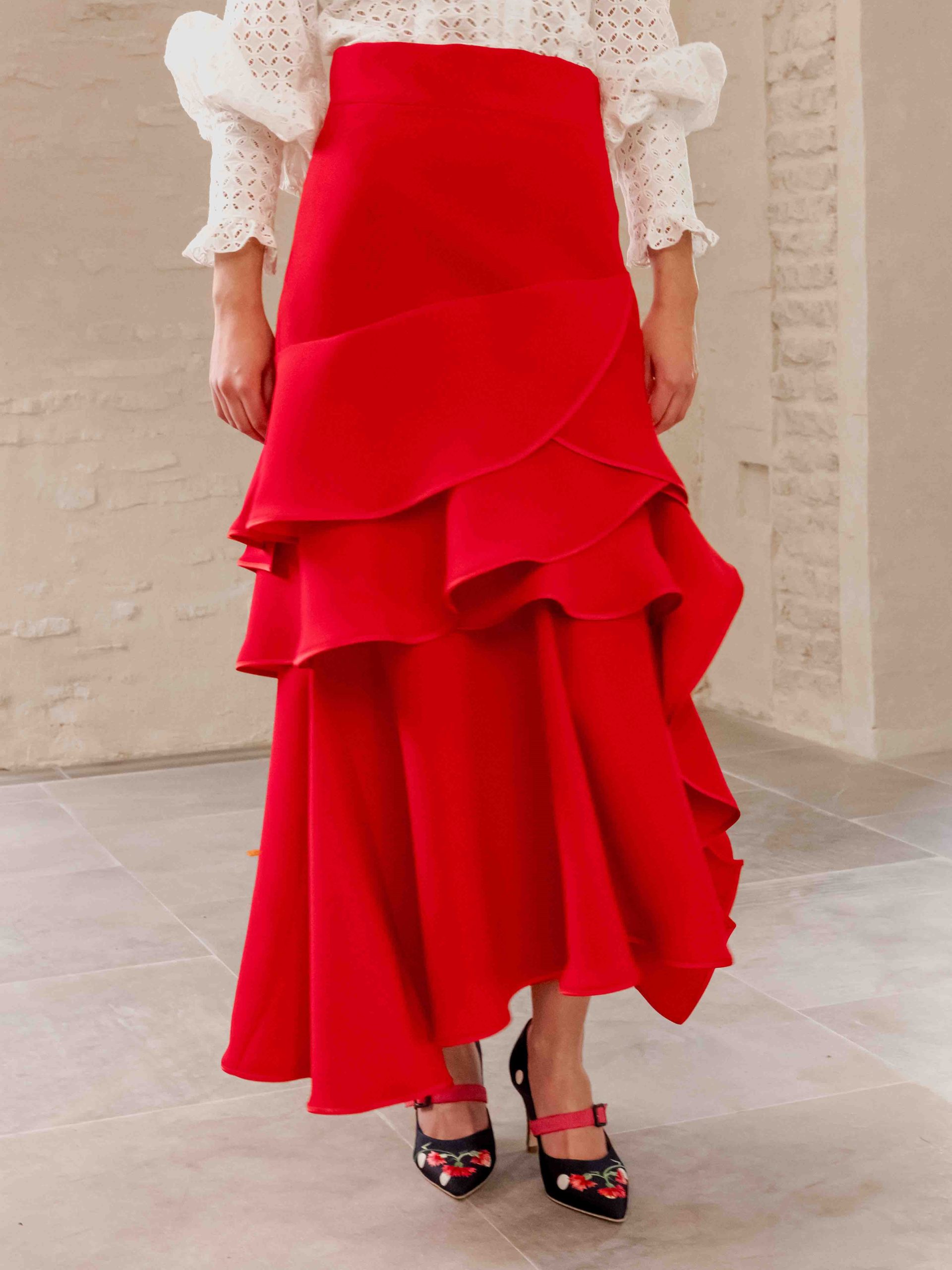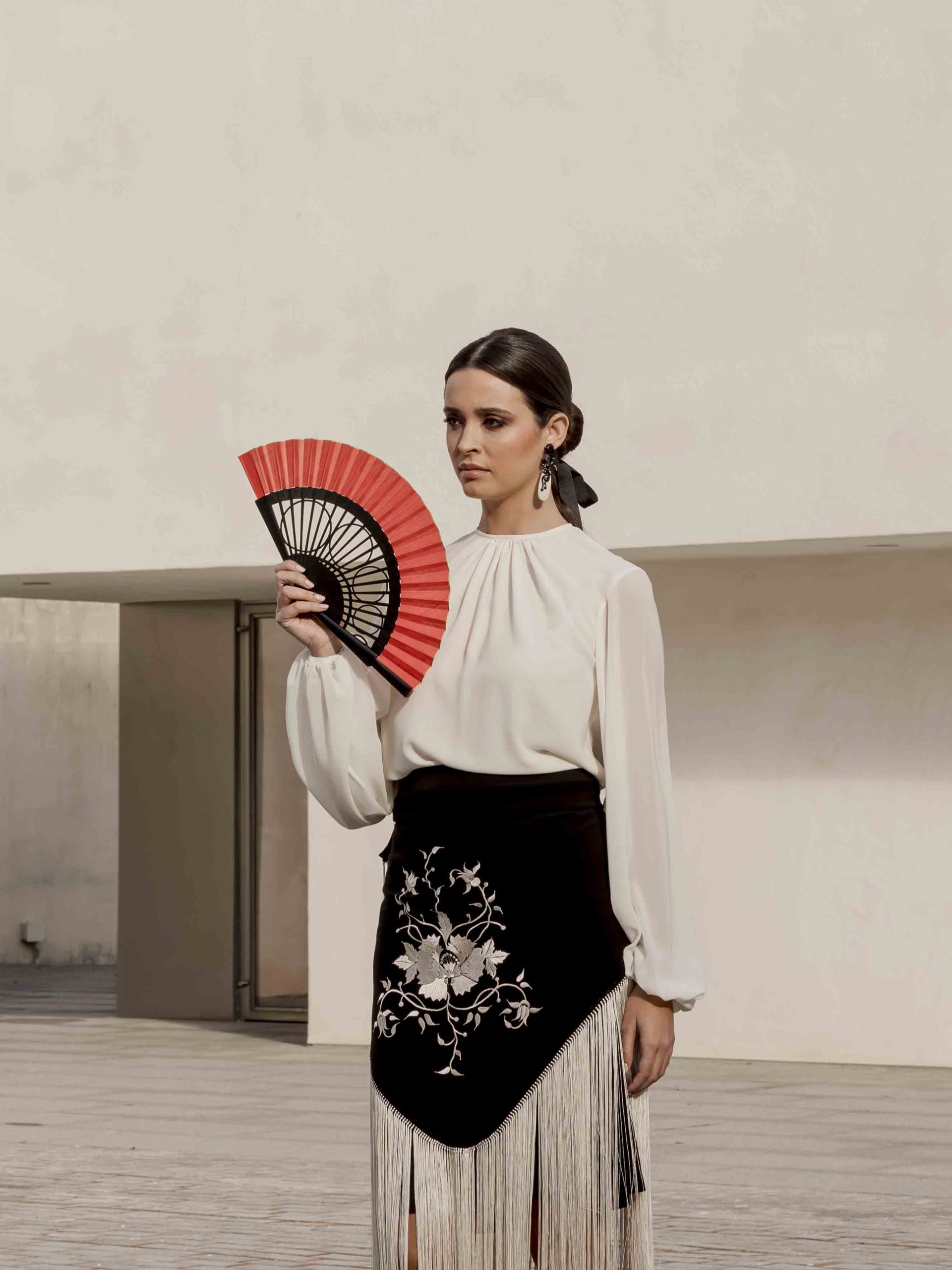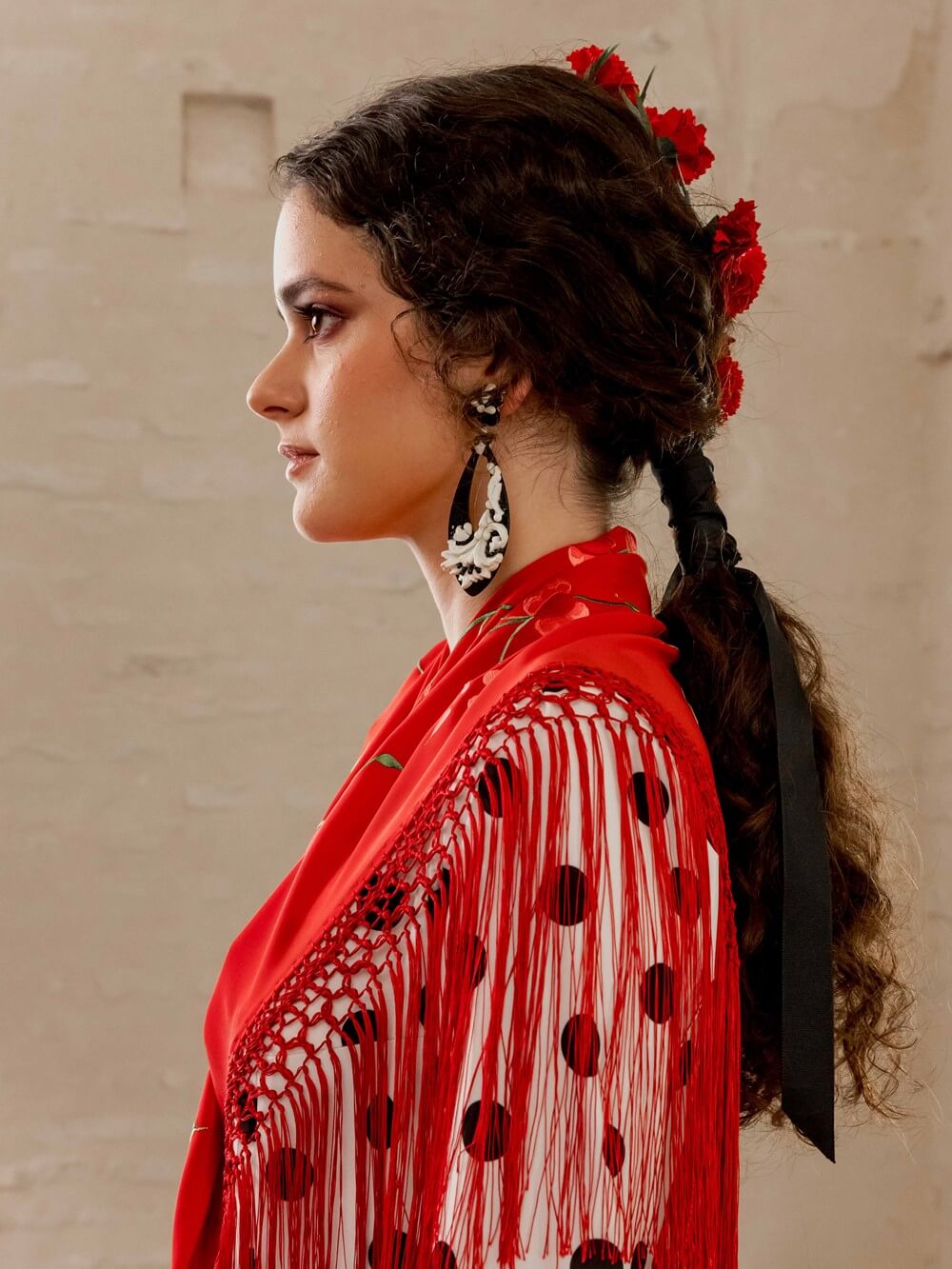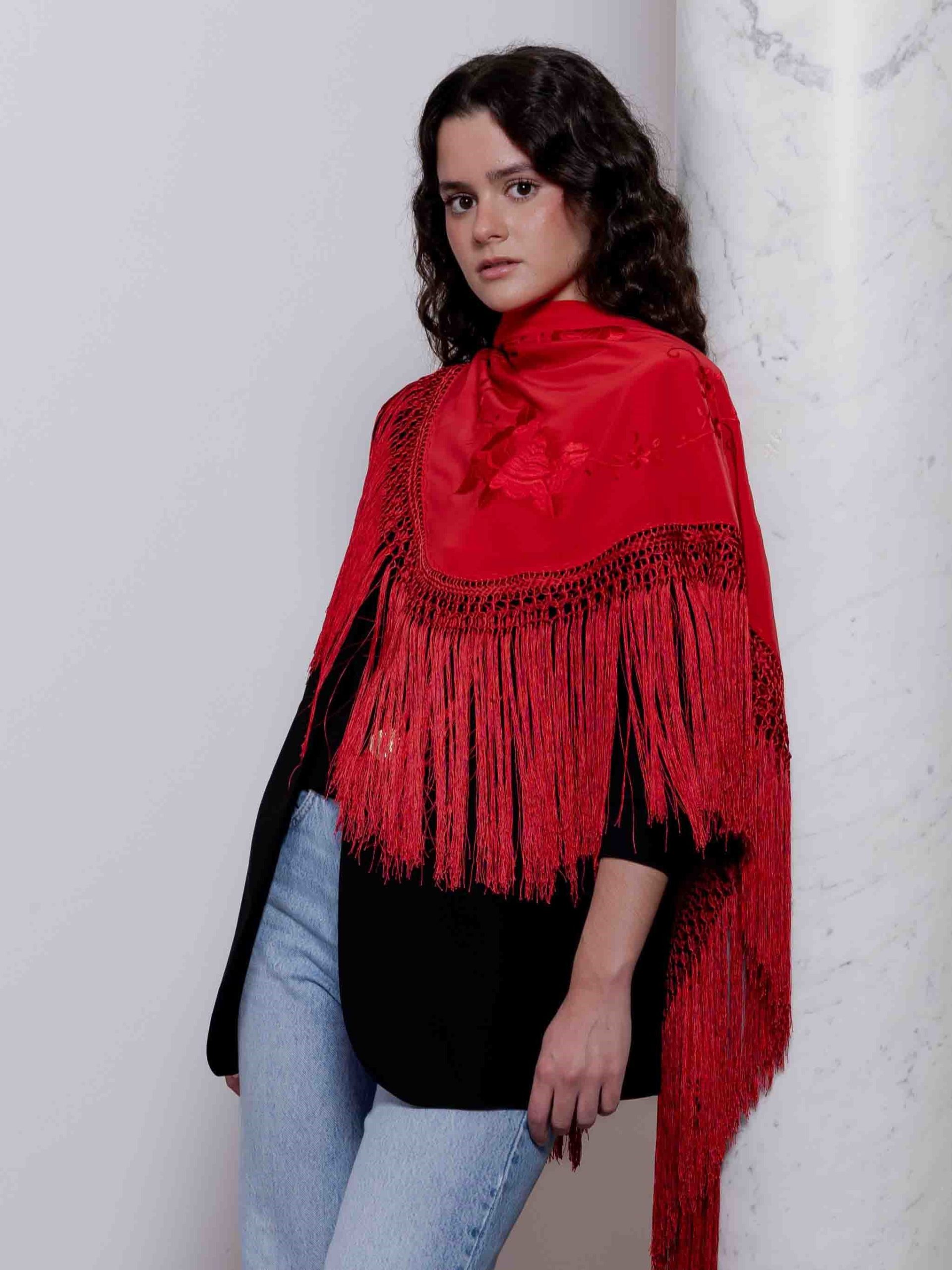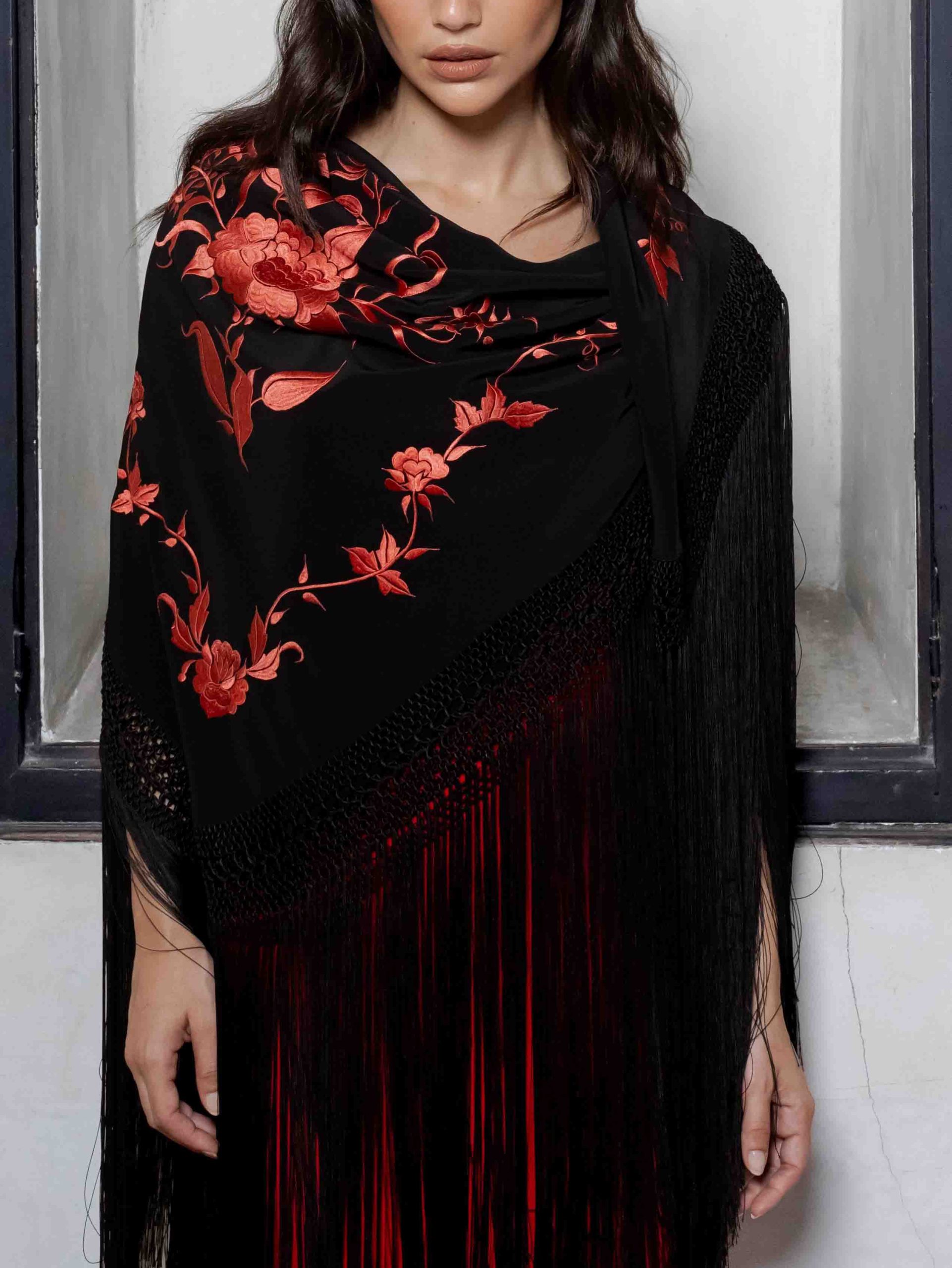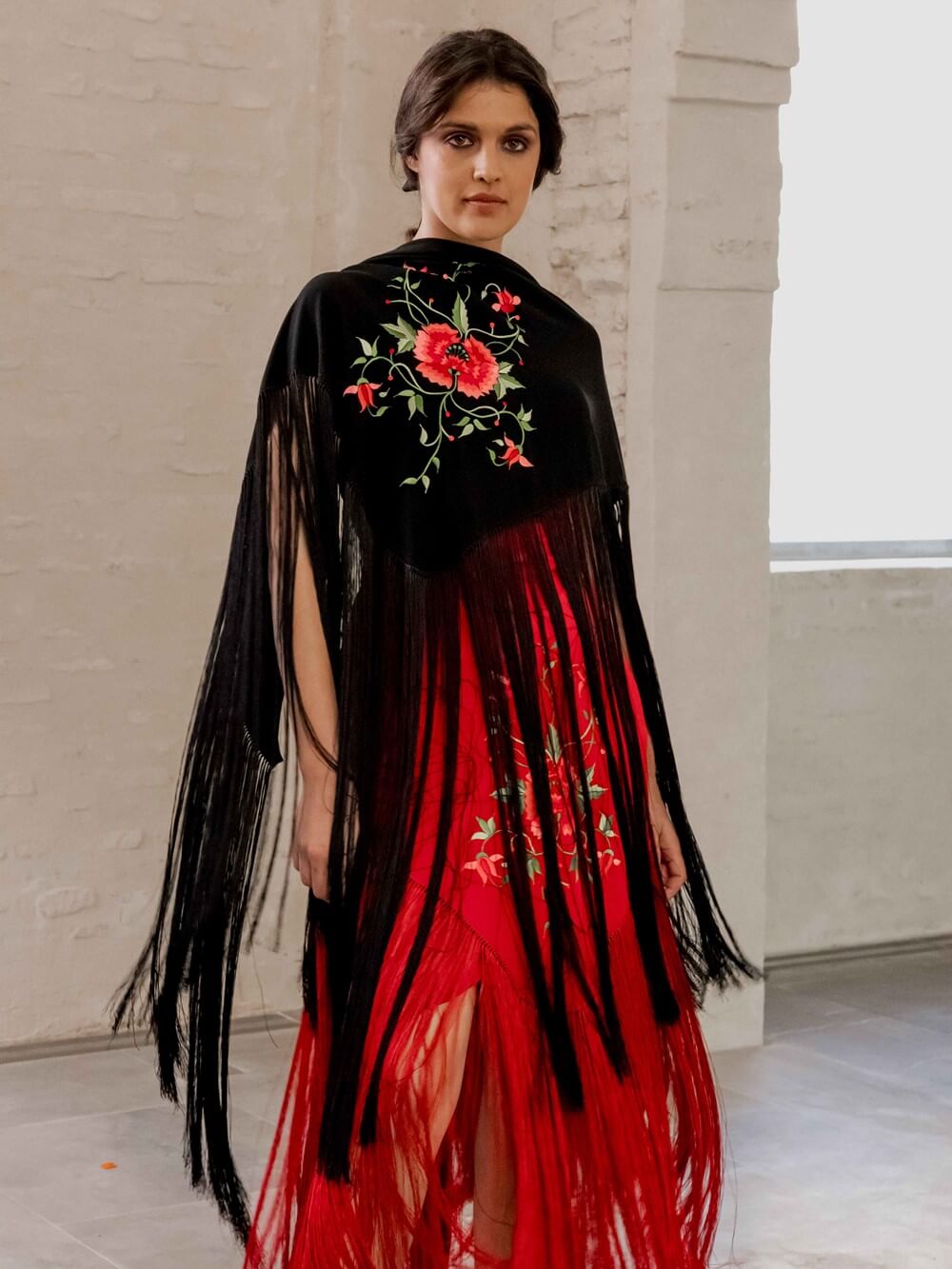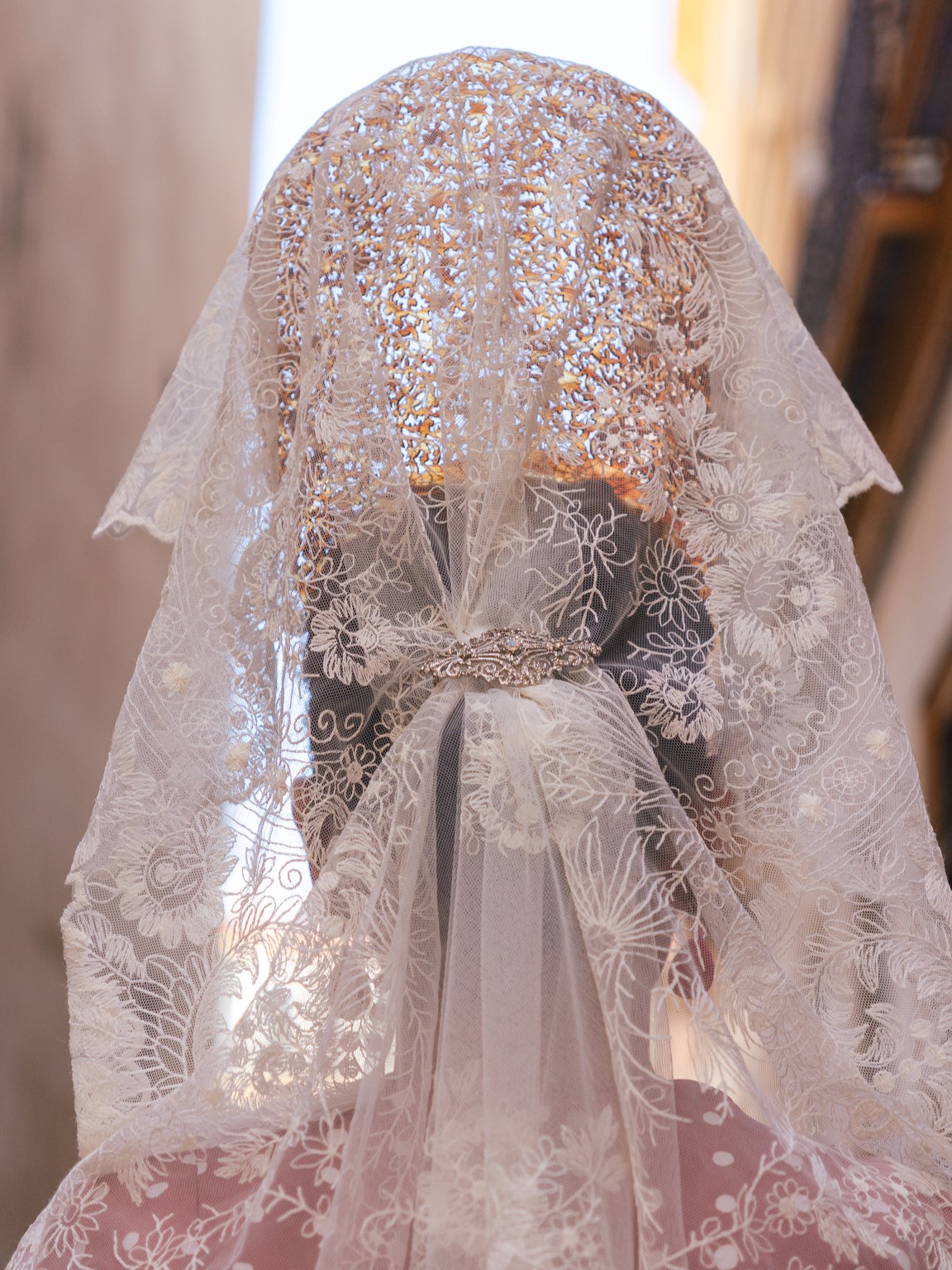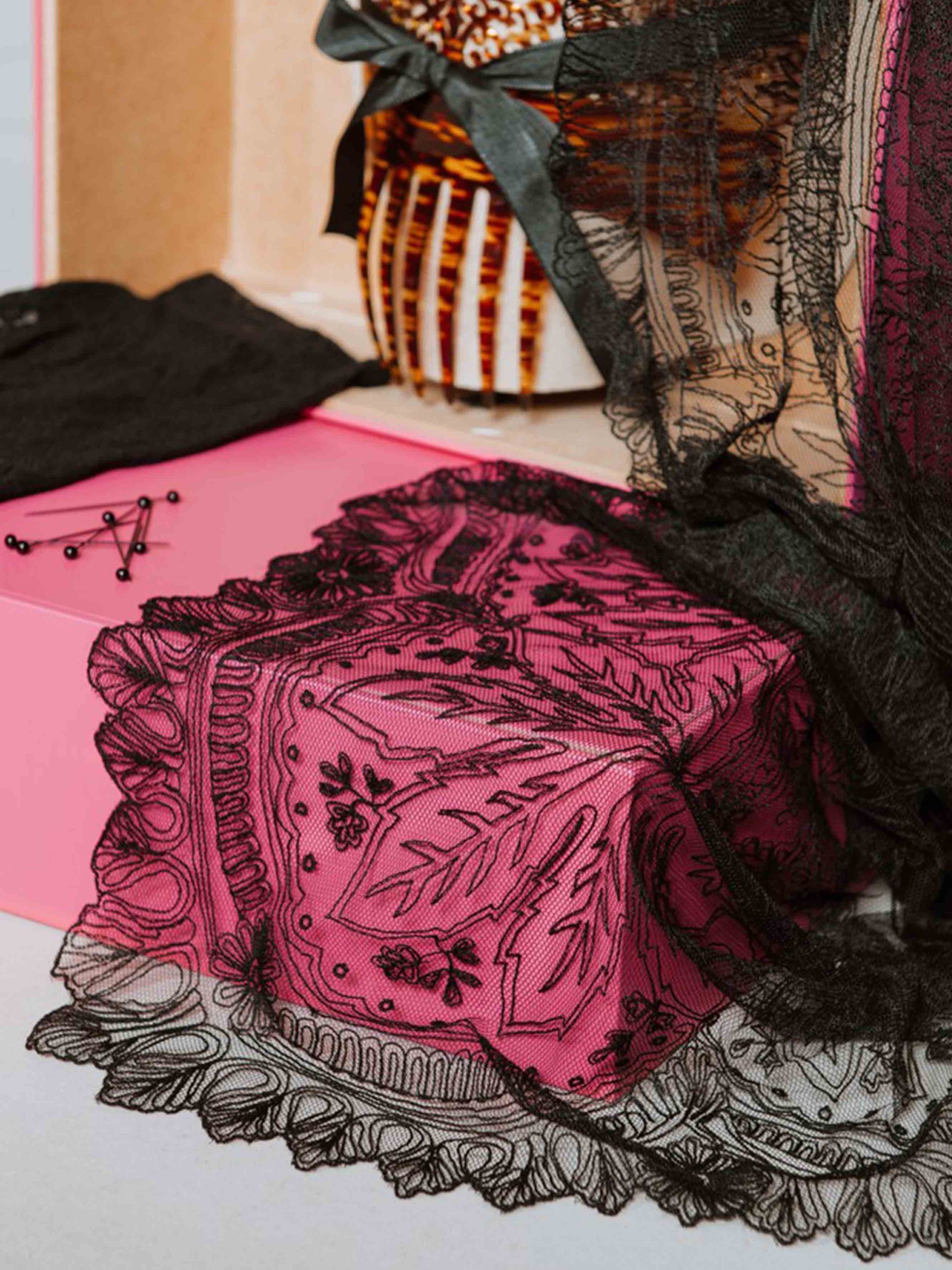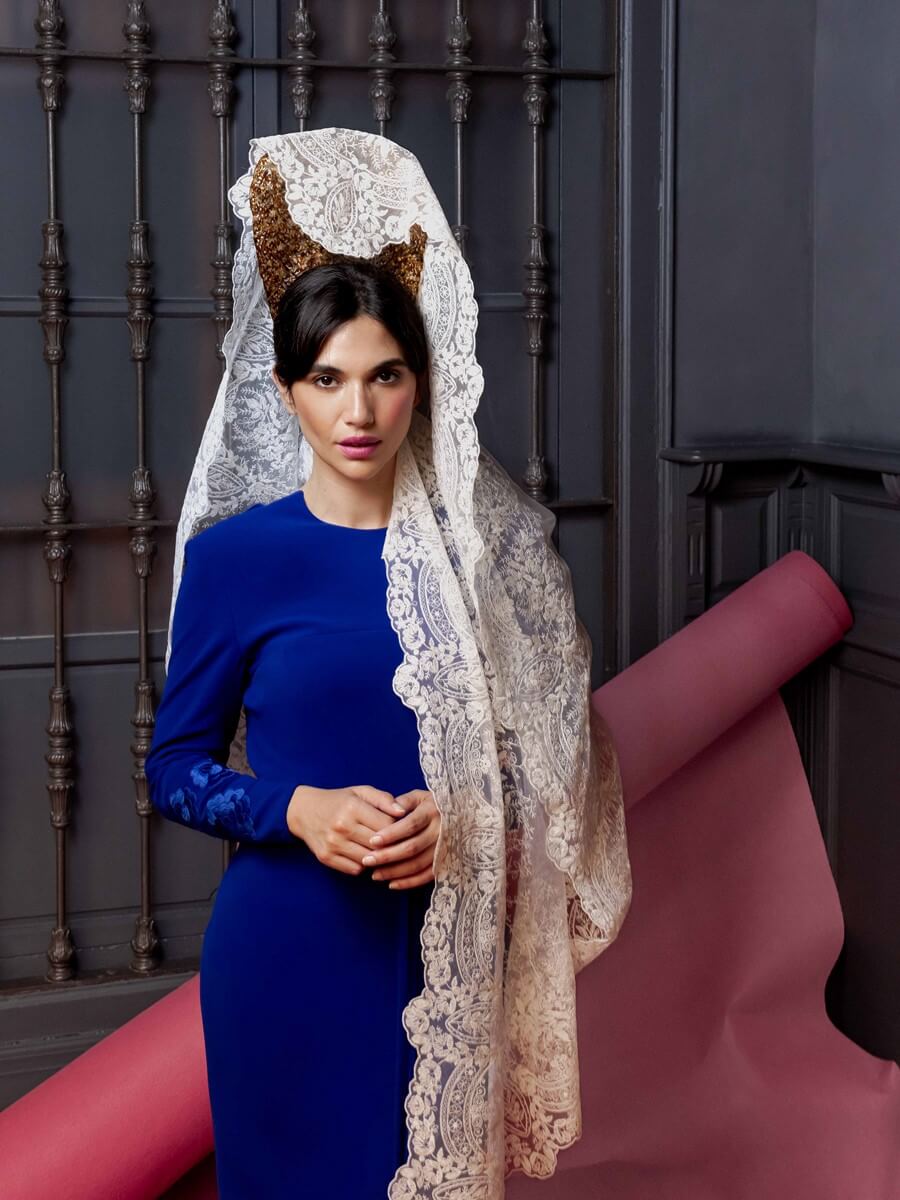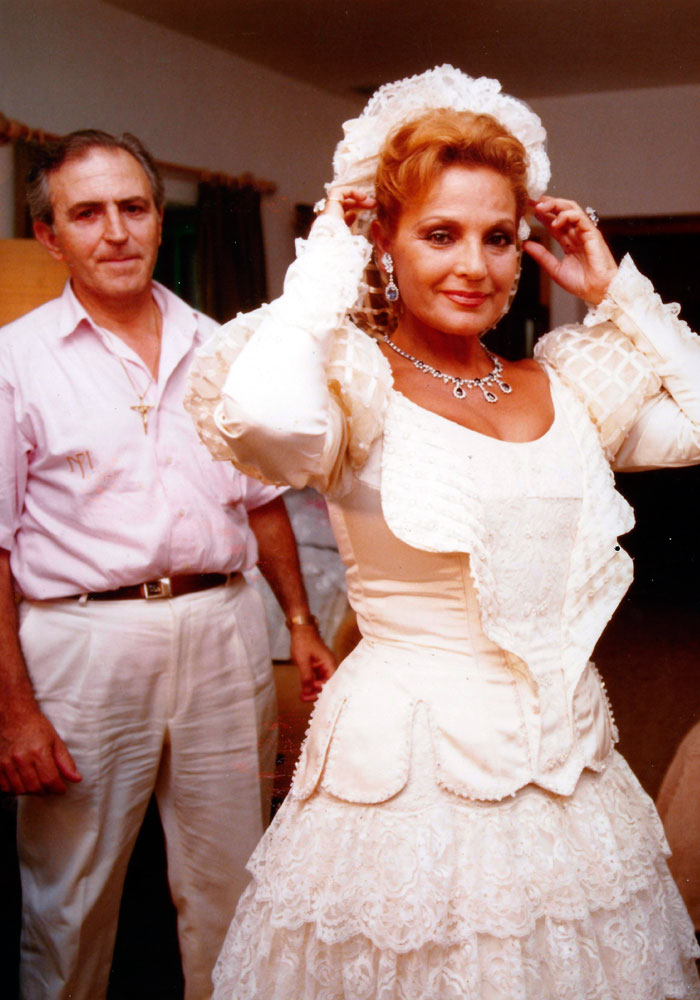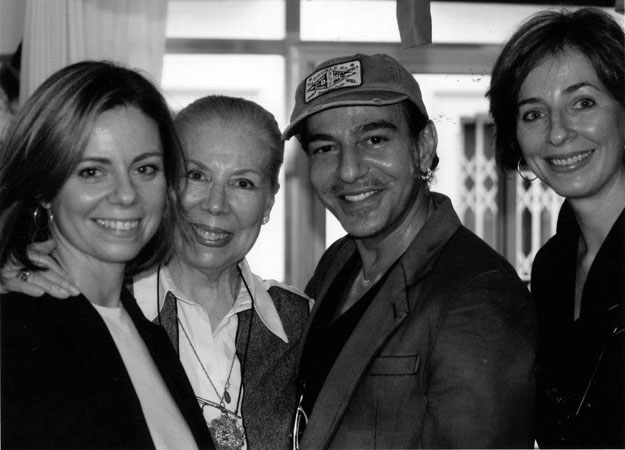Lina shows in Naples with the help of the Instituto Cervantes of Naples and the School of Design of the Italian city.
OUR HISTORY
Legacy, inspiration, naturalness, artisanship. The four letters of our name, LINA, embroider tradition and future in more than six decades of history.
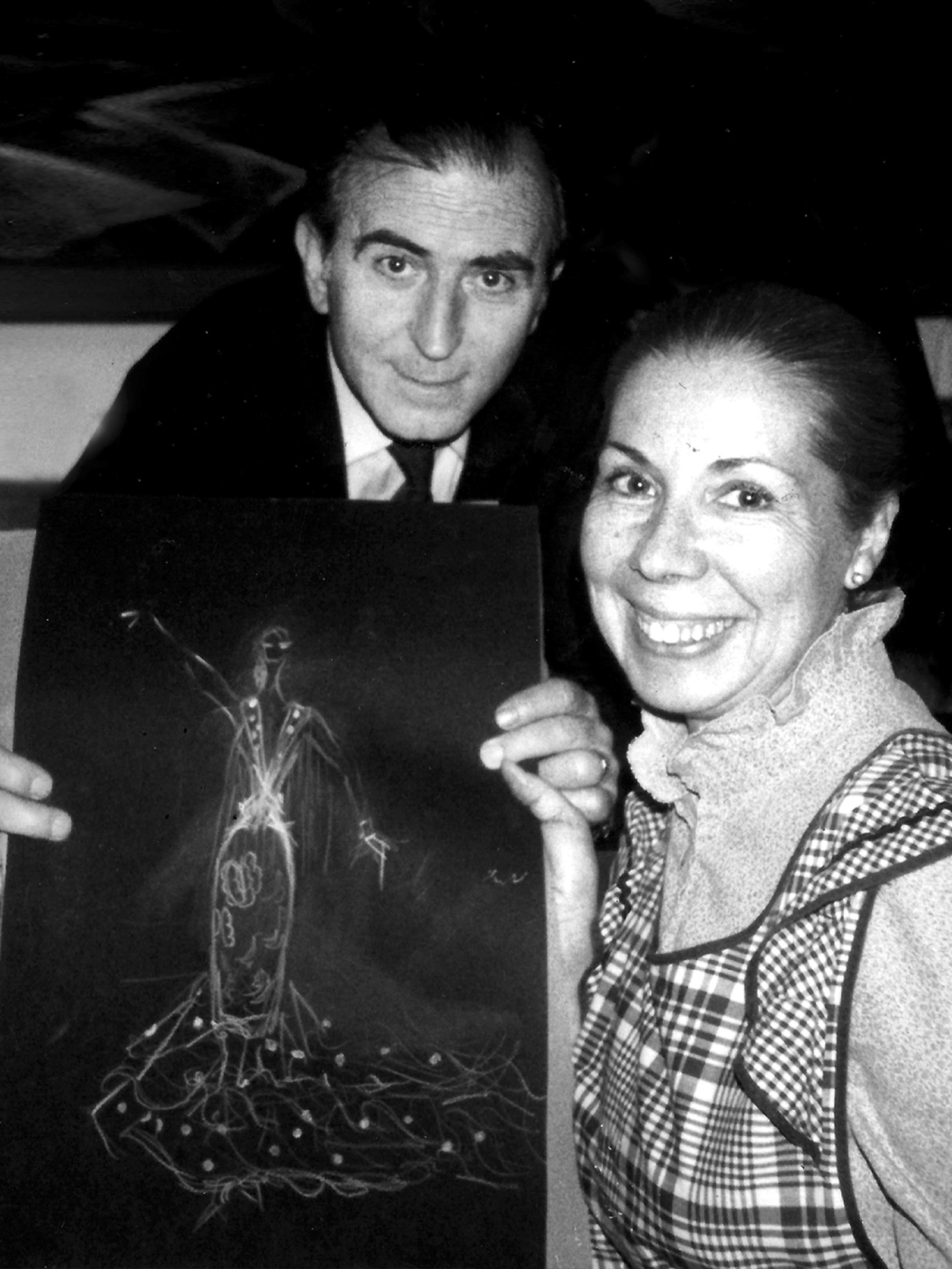
Lina was born out of love: Marcelina Fernández and Francisco Montero got married in the Sagrario of the Cathedral of Seville and she designed and sewed her own wedding dress. The first fruit of their union will be precisely the sewing workshop that is the germ of the firm we know today: a tenement house in Salado Street in Triana would be their first home.
Lina was the creative soul of the workshop; Francisco, the business engine of a dream destined to make history in Andalusian craftsmanship and culture.
The proximity of the workshop to the tablao El Guajiro, a symbol of Seville in the sixties, propels Lina Sevilla as the ‘home’ of the great artists of the time.
The 1960s, which marked a great socio-economic change in Spain and a revolution in Europe, also marked the transformation of the flamenco dress. Lina was the architect: she closed the armholes of the dresses and incorporated the small shawl as the perfect accessory instead of attaching the fringes to the neckline, as was customary.
With the opening of the new shop in Lineros Street in 1979, a new era also began for Lina Sevilla. Embroidery designed by Francisco Montero was introduced – still a benchmark four decades later – and when Rocío, the eldest of the couple’s daughters, joined the team in 1985, Lina Sevilla’s patterns once again set the trend: the dress was stylised, lowering the waistline to the hips – until then, the flounces came from the waist.
1992 saw Seville become an international showcase with the Universal Exposition. This was also the date when Lina Sevilla, an emblem of evolution, began to revamp its own image. Mila, the youngest daughter of the founders, would be responsible for this.
The line of accessories was introduced, the online universe of the firm was created and three major lines were created: the classic line, Lina Sevilla Esencial; the seasonal line, Lina Sevilla Colección; and the limited edition ready-to-wear creations, Lina Sevilla Global. Afterwards, leather craftsmanship would be added with the LeCOOP line.
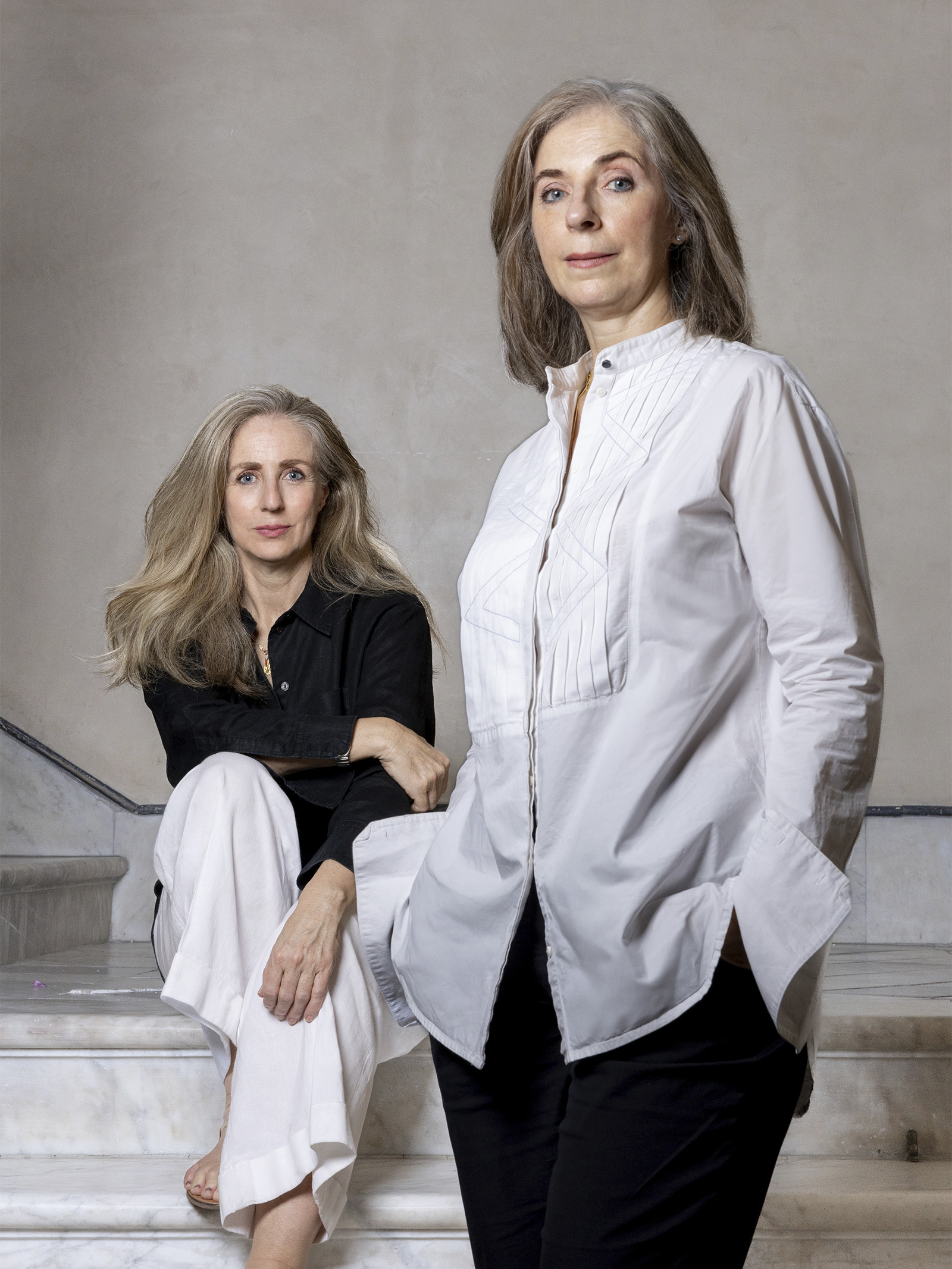
The 21st century arrives for Lina Sevilla with numerous awards that consecrate the firm as an emblem of Andalusian and Spanish fashion and culture.
The Giraldillo Award for the best wardrobe at the XXV Biennial of Flamenco Art of Seville; the Mother-of-Pearl Button of the Seville Guild of Master Tailors and Dressmakers; the recognition of Lina as an Adoptive Daughter of Triana; the Medal of the City of Seville; the tribute from the Andalusian Association of Flamenco Fashion Designers; the exhibition at the Museum of Popular Arts and Customs of Seville; the Flamenco en la Piel de Sevilla Award; the Flamenco en la Piel de Lina Sevilla Award; and the LeCOOP line; the Flamenco en la Piel prize at SIMOF (International Flamenco Fashion Show); the Alma Flamenca prize at the Jerez-Tío Pepe Flamenco Catwalk; or the distinction as an emblematic establishment of Seville by the Chamber of Commerce and the Seville City Council are some of the tributes to the firm’s trajectory and its commitment to cultural and historical values.
-
1960
Marcelina Fernández and Francisco Montero marry in the Sagrario of Seville Cathedral. Lina designs and sews her own wedding dress. The couple founds the firm in a small sewing workshop in a tenement house in Calle Salado de Triana near the Guajiro, a flamenco tablao full of great artists. As revolutionary as they are hard-working and discreet, Lina is the creative soul of the workshop, while Francisco is the business driving force behind the dream.
-
1961
From its beginnings, Lina created trends in flamenco fashion. She was the first to decide to close the armhole of the dresses and to incorporate the small shawl, the perfect complement to the flamenco dress. Until then, the fringes were attached to the neckline. The firm sewed for artists from all the tablaos in Seville at the time, such as Manuela Vargas.
-
1966
Lina dresses Princess Grace of Monaco for the April Fair. The famous photograph of the American leaving the Hotel Alfonso XIII on the arm of Prince Rainier of Monaco, taken on 20 April of that year, went around the world. That white suit with pink perforated straps is still an icon of the brand today. Lina designed all the costumes worn by the actress Carmen Sevilla in the film Camino del Rocío. One of the costumes was red, with long sleeves and feminine and flirtatious organdie petticoats, a trademark of the company.
-
1968
The still Princess Sofia visited the April Fair in Seville with Prince Juan Carlos. For the occasion, His Royal Highness wore a classic Lina 1960 flamenco dress with red polka dots. Lina moves her workshop to a palace house, designed by the architect Juan Talavera Heredia, located in the popular Santa Cruz district.
-
1969
Pepa Flores, Marisol, at the age of 21, wears a Lina design in the film Carola de día. Carola de noche, directed by Jaime Arguiñán. Lina decides to lower the length of the dresses to floor length (until then they had been worn around the ankles), highlighting the waist and neckline.
-
1974
During this period, as throughout her professional career, Lina designs and makes costumes for the most important artists such as Rocío Jurado, Isabel Pantoja, Lola Flores, Juanita Reina, the dancer Manuela Vargas, María Rosa and Merche Esmeralda, among others.
-
1977
Rocío Jurado chooses the Sevillian designer for a very special occasion: the christening of her daughter in the village of Rocío. Both are dressed by Lina.
-
1979
Francisco Montero and Lina inaugurate the shop in Lineros Street, now closed. The party is attended by the flamenco dancer Federico Casado ‘Caracolillo’ and his wife Juanita Reina; Cerezal, Isabel Pantoja and Remedios Amaya, among other celebrities.
-
1980
The firm introduces exclusive embroideries designed and made by Francisco Montero, which are still in use today.
-
1983
White satin, double tulle, with a boat neckline and a 7-metre train. This was the wedding dress in which Isabel Pantoja said ‘I do’ to Paquirri on 30 April in the Church of Gran Poder. For that special day, Francisco Montero designed the original wedding invitation with a bullfighter’s cape. Lina has been dressing the Tonadillera since she was 7 years old. She also made the wedding dress for her son Francisco.
-
1985
Rocío, the eldest of the daughters, began to collaborate in the workshop, combining her design studies with her work in the firm. For more than a decade she has been the Creative Director of Lina 1960. Her collections preserve the artisanal values of the house, showing her own artistic personality. She carefully follows the evolution of each outfit from the sketch to the final result.
The Sevillian designer makes her most revolutionary contribution to the world of flamenco fashion. She stylised the dress, lowering the waistline to the hips. Until then, the dresses had flounces from the waist.
-
1989
Isabel Pantoja wears a Lina dress to give the opening speech at the Cadiz Carnival.
-
1990
Lina makes a black tailed gown about 9 metres long for the show ‘Soul’ by the dancer Joaquín Cortés.
-
1991
Lina is nominated for the fifth edition of the Goya Awards in the category of ‘Best Costume Design’ for the film Yo soy esa, directed by Luis Sanz and starring José Coronado, Isabel Pantoja, Loles León and Juan Echanove.
-
1992
Mila Montero, the youngest of the founders’ daughters, joins the family business. A period of renewal of the firm’s image began. First, with the introduction of the accessories line; then with the website and the online shop. Later with the classic line Lina Esencial and the seasonal Lina Colección, and finally with the launch of the limited edition ready-to-wear line, Lina Global, and the leather goods line, LeCOOP. Mila is currently the Director of Lina Sevilla.
-
1996
Actress and TV presenter Carmen Sevilla marries businessman Vicente Patuel on 19 November, wearing a Goya-inspired wedding dress designed by Lina.
-
2001
Lina dresses the Baroness Thyssen for the Camino del Rocío.
-
2005
Giraldillo Award for best wardrobe for the tailed gowns of Milagros Menjíbar, coinciding with the XXV Anniversary of the Biennial of Flamenco Art.
-
2006
Lina receives the Mother-of-Pearl Button for her professional career from the Seville Guild of Master Tailors and Dressmakers. John Galliano, as director of Dior, visits Lina’s atelier to be inspired by the flamenco dress. Lina is named adopted daughter of Triana.
-
2009
Actors Tom Cruise and Katie Holmes choose a Lina dress for their daughter Surie. The image goes around the world.
-
2010
Lina receives the Medal of the City of Seville for the originality and quality of her craftsmanship for over 50 years. The Andalusian Association of Flamenco Fashion Designers pays tribute to the career of the designer Lina at SIMOF. The firm celebrates its Golden Jubilee on 22 February with a fashion show at the Casa Palacio Bailén in Seville.
-
2012
Lina designs and makes the costumes for the corps de ballet of ‘Artesano’, a show on Miguel Poveda’s tour.
-
2013
The Museum of Popular Arts and Customs of Seville proposed a 50-year journey through the evolution of the flamenco dress through the designs of Lina Sevilla.
-
2014
The firm presents the ‘La Gata Rosa’ collection at the 20th International Flamenco Fashion Show (SIMOF) inspired by the work of the post-impressionist painter Hermenegildo Anglada Camarasa (1871-1959).
-
2015
Lina presents the ‘Lina 7’ collection on the SIMOF catwalk. A renewed look at the flamenco dresses that were made in her workshop in the early 70s. Lina receives the ‘Flamenco en la Piel’ Award for her professional career during SIMOF. The English designer Alice Temperley, together with Alejandra Rojas, visit Lina’s workshop.
-
2016
The firm opens SIMOF with its collection ‘Miradas’, inspired by the women portrayed by Francisco de Goya. Lina presents OFF WHITE, her first bridal collection with an outdoor fashion show, in front of the Cathedral of Seville. Each piece in this collection has been thought out down to the smallest detail and respects the house’s maxims: craftsmanship, tradition and innovation. The wedding dresses, made with passion and time, avoid excessive adornment, seeking simplicity and elegance, but above all giving priority to the quality of the couture. Lina 1960 sponsors the 5th edition of the Andújar Flamenca fashion show.
-
2017
Lina presents the collection ‘Manifiesto’, a well-deserved tribute to all the craftswomen, dressmakers and seamstresses who make flamenco dresses all year round.
-
2018
Lina opens SIMOF with her collection ‘Río de Rosas’. Lina receives the ‘Alma Flamenca’ award from the Pasarela Flamenca Jerez-Tío Pepe. The Chamber of Commerce and the Seville City Council distinguish Lina 1960, among others, as an emblematic establishment of the city for its cultural and historical values.
-
2019
Lina is honoured during the 25th anniversary Gala of SIMOF held on 1 February at the Cajasol Foundation. Lina 1960 opens the SIMOF catwalk with her collection ‘Fuera de Contexto’. Lina dresses dancers from the Cristina Heeren Foundation at an event held at the Casa Palacio de Salinas on the occasion of the World, Travel &Tourism Council summit. Rocío Montero, Lina’s Creative Director, is invited to the TV show ‘Maestros de la Costura’ to show her work and direct one of the contestants’ challenges.
-
2020
On 9 January, Lina celebrates its 60th anniversary with a fashion show at the Casa de Salinas in Seville. In October, the firm launches its new website and online shop, coinciding with the launch of Lina Global, the limited edition ready-to-wear line, and LeCOOP, the leather goods line.
-
2022
The firm is commissioned to make the 12-metre-long tail coat that the singer Rosalía wears on her ‘Motomami’ world tour.
-
2023
Transfer of the workshop shop to its current location in the central Álvarez Quintero street, number 11 in Seville. Thus beginning a new stage and updating of the firm.
-
2024
Presentation of the Bambalina Collection at the Maestranza Theatre in Seville.

